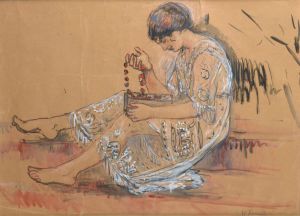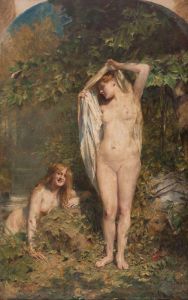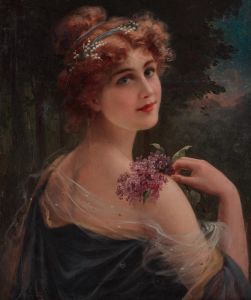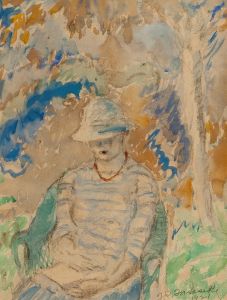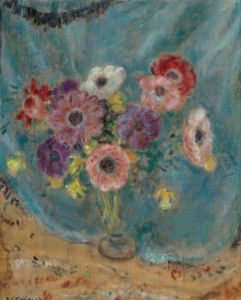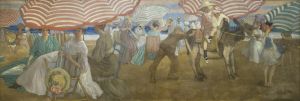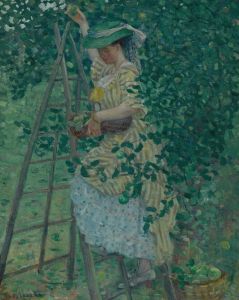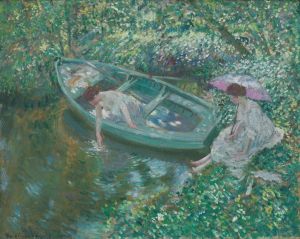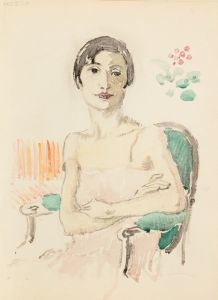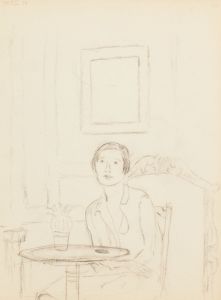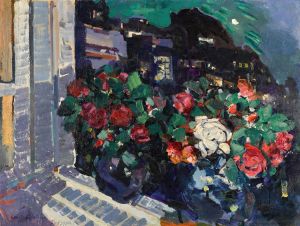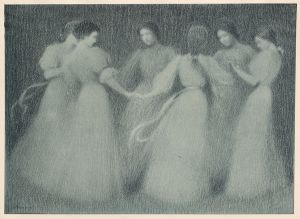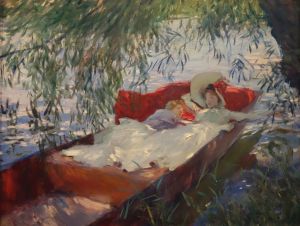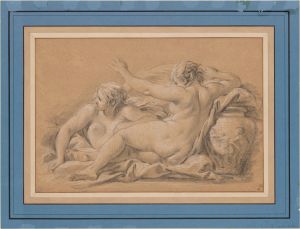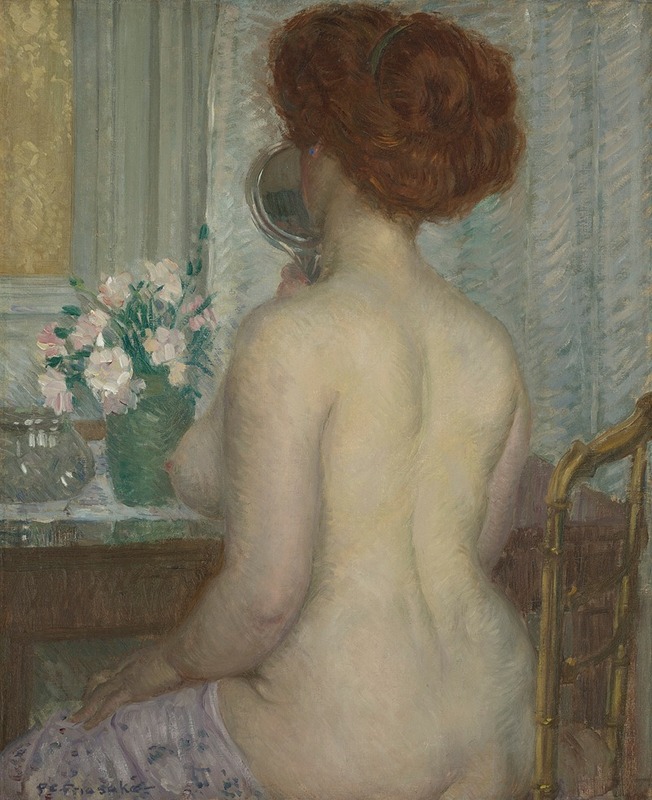
Woman at a Dressing Table
A hand-painted replica of Frederick Carl Frieseke’s masterpiece Woman at a Dressing Table, meticulously crafted by professional artists to capture the true essence of the original. Each piece is created with museum-quality canvas and rare mineral pigments, carefully painted by experienced artists with delicate brushstrokes and rich, layered colors to perfectly recreate the texture of the original artwork. Unlike machine-printed reproductions, this hand-painted version brings the painting to life, infused with the artist’s emotions and skill in every stroke. Whether for personal collection or home decoration, it instantly elevates the artistic atmosphere of any space.
"Woman at a Dressing Table" is a painting by the American Impressionist artist Frederick Carl Frieseke. Born on April 7, 1874, in Owosso, Michigan, Frieseke became one of the prominent figures in the American Impressionist movement. He is best known for his depictions of women in intimate, domestic settings, often bathed in natural light.
Frieseke moved to France in the early 1900s, where he became associated with the Giverny art colony, a group of American artists who settled near Claude Monet's home in Giverny. This environment profoundly influenced his work, as he adopted the Impressionist focus on light and color.
"Woman at a Dressing Table" exemplifies Frieseke's style and thematic interests. The painting portrays a woman seated at a dressing table, engaged in the private act of grooming. The setting is likely an interior space, illuminated by soft, natural light that filters through the room, creating a serene and intimate atmosphere. The woman's figure is rendered with delicate brushstrokes, capturing the subtleties of light and shadow on her skin and clothing.
Frieseke's use of color is particularly notable in this work. He employs a palette of soft, pastel hues that enhance the painting's tranquil mood. The interplay of light and color creates a sense of depth and volume, bringing the scene to life. The artist's attention to detail is evident in the depiction of the dressing table's objects, such as brushes, bottles, and other personal items, which add to the painting's realism and narrative quality.
The composition of "Woman at a Dressing Table" reflects Frieseke's interest in capturing moments of quiet introspection and the beauty of everyday life. The painting invites viewers to observe a private moment, offering a glimpse into the subject's world. This focus on the intimate and personal is a hallmark of Frieseke's work and aligns with the broader goals of the Impressionist movement, which sought to capture fleeting moments and the effects of light.
Frieseke's contributions to American Impressionism have been widely recognized, and his works are held in numerous public and private collections. "Woman at a Dressing Table" is an excellent example of his ability to blend the influences of French Impressionism with his unique perspective, creating works that are both visually captivating and emotionally resonant.
Throughout his career, Frieseke remained committed to exploring the themes of femininity, beauty, and domesticity. His paintings often feature women in moments of leisure or contemplation, set against the backdrop of richly decorated interiors or lush gardens. This focus on the female experience and the intimate spaces they inhabit is a defining characteristic of his oeuvre.
In summary, "Woman at a Dressing Table" by Frederick Carl Frieseke is a quintessential example of the artist's work, showcasing his mastery of light, color, and composition. The painting captures a moment of quiet reflection, rendered with the delicate touch and keen observational skills that define Frieseke's approach to art.





